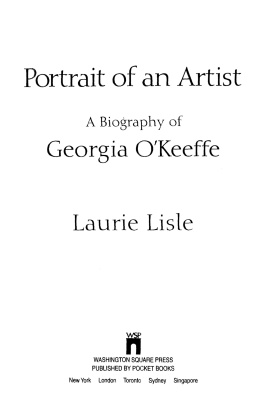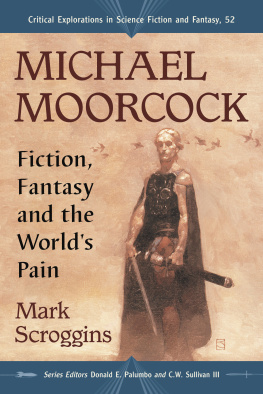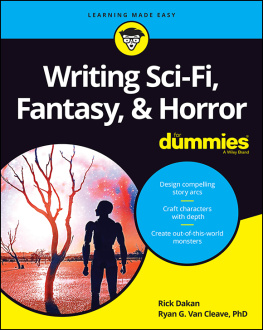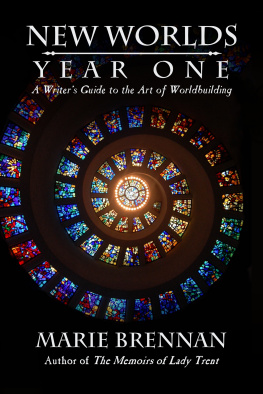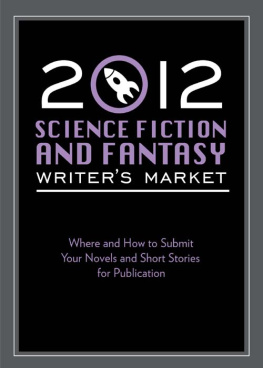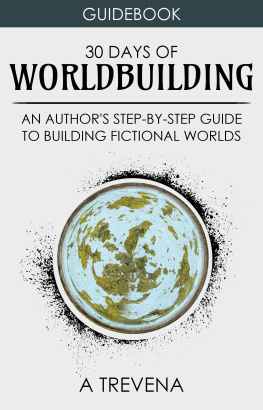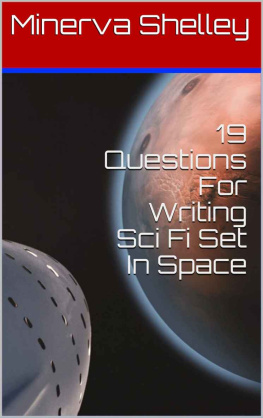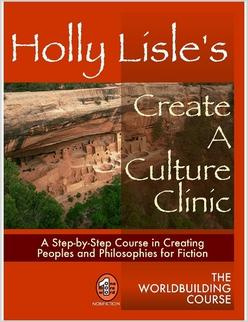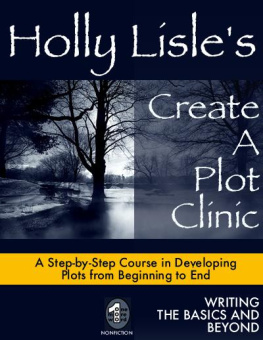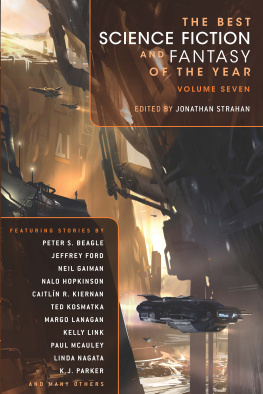Holly Lisles
Create A World Clinic
HOLLY LISLE
WORLDBUILDING III
TABLE OF CONTENTS
BUILDING WORLDS
CHAPTER 1
World #1: The Dot World
Build Your First Complete World In Five Minutes
Im going to hold off on the introduction for a few minutes, in favor of trying something different.
Im going to walk you through building your first world right now. So grab a pen and a piece of paper. A napkin will do just fine if its all thats available, or lined paper from a notebook, or the back of a page of the stack of email printouts sitting on your desk. Or that memo from your boss
Whatever. If itll hold ink and youll be able to read what youve written once youre done, itll do.
Youre going to build a small world, but big enough to give you what you need for a story. And by the time were done with this first exercise, youll already have a start for your story, too.
Heres how this works. All the ways through this course, Ill take the course right along with you as I write it. When I build an exercise, Ill actually do the exercise so you can see some of the possibilities but this will work much better for you if you dont see my answers first .
So to make sure you get work that is purely your own, you complete each exercise before you read what I wrote.
Only when youve finished the exercise, move on to the next page, and take a look at what I got.
Ready?
Lets build a world.
The Exercise
With your pen and paper at the ready, I want to you imagine that you are standing in a dark room. Its small, and it has a ceiling, a floor, and four walls, but you cant see them yet, because its absolutely dark. Dont worry. The light will go on in a second.
But before it does, the room has one other thing in it, not including you. When the light goes on youre going to see itbut odds are pretty good that a word or an image just popped into your head suggesting what the thing in the room with you isso if it did, USE that.
It doesnt matter how silly you think it is. It doesnt matter if you cant imagine how that word or image could matter. Or how you could get a story from it.
All that matters is that this time, you use the very first answer you get.
Okay. Now the light goes on, and you see the thing in the room with you.
Your Turn
Write down what it is.
What I Got
My answer is: The paint on the wall.
What this means is that my Muse, also known as my subconscious mind , or right brain , has decided to be a smartass. Dont know if you have a good working relationship with your Muse yet or not, but my relationship with mine is interesting .
And because sooner or later, most folks who rely on creativity to put food on the table develop equally interesting relationships with their Muses, Im going to detour for just a second here. This matters, and I guess this is as good a place as any to discuss the bare bones of it.
Your left brain is your editor, the driver of your body when everything is calm and no tigers have just started growling behind you, your internal grown-up. Your right brain is a perpetual kid, one who believes everything it sees and hears, one who loves to play, one who balks when commanded to work. (Its also the part of you that will get your feet running and have you up in the top of a tree before you can think about it if those tigers do start growlingso it has many uses.) But if you want to build a career as a writer, you have to learn how to deal with both halves of your mind. And telling your right brainyour Musethat the idea it just gave you is stupid is a real fine way to make sure that part of your mind goes off in a corner and doesnt give you any more ideas for a good long time. (This is how writer's block is born, incidentally.)
Your You/left brain/conscious mind is smart and articulate and organized, but it is not creative. So if you tick off your Muse and give it an excuse to shut down and quit playing your game, you are going to have a bad writing day. Or week. Or year.
Having been dealing with my particularly cantankerous Muse/right brain/subconscious mind while having to be creative on deadline for the last twenty-five years, I have learned the importance of using the ideas it gives me, no matter how weird or unworkable they seem initially, and then working to make sense of them.
EVEN, and this is important, when I suspect the idea was intended to make things difficult for me.
The paint on the wall.
Ha. Ha. Very funny. My muse could have told me, window with bars on it , or ancient door , or even dead body , and I would have had an easy time of this. But it didnt, so now you get to see what to do when your Muse decides to get cute. And because its good practice, no matter what answer your Muse gave you, youre going follow the same steps I do this time.
I have to dig deeper. I need to ask a follow up question, and I need to ask it in a certain way. It cannot be a question that can be answered with a yes, no, or maybe, as with the question, Is there anything unusual about the paint on the wall?
My subconscious mind just rolls its metaphorical eyes at that one and says, Maybe.
This is not helpful, but your subconscious mind wont do things just to be helpful . It likes to play, and the only person it has to play with is you.
So you have to learn to ask questions that can only be answered in a useful fashion.
This is my follow-up question:
What is unusual about the paint on the wall?
Your Turn
Before I write down the answer to that (though my Muse just told me the answer, and it is, in fact, pretty interesting), you need to ask a follow-up question.
Here are some variants that will work:
- Why does this___________ in the room matter?
- How did this ____________ get here?
- What is unusual about this __________?
- Who (or what) is this, and how did he/she/or it get here?
- When did this ___________ appear, and under what circumstances?
- Where did this ___________ come from? (Or where does this ___________ go?)
- Why is this ____________here?
Just answer one of the questions above (or one of your own devising related to your specific situation). However, answer it at whatever length you need. Your objective is to give yourself the information that will allow you to understand what youre dealing with. So when you have answered the question youve chosen, write outthen answerany follow-up questions you need to ask. Dont turn to the next page until youre sure you got the full answer.
What I Got
So heres my question again: What is unusual about the paint on the wall?
And because of the way I work with my right brain, Im going write out the answers I just got in the form of a conversation. Yes, I do know this is bizarre, and you are not the first person to raise an eyebrow and suggest that I might want to seek care, counseling, or perhaps a nice padded room.
I do this because it works, because it lets me develop good story ideas quickly, and because I actually hold these conversations inside my head, though my right brain answers in images (and other sensory data) more often than it answers in words.
I just dont usually do this in public.
Onward.
Holly : What is so unusual about the paint on the wall?
Muse: Its black, and its high gloss.
Holly: Okaywhy does that matter?
Muse: Because it hides the blood.
H: (thinking carefully to avoid potential booby traps) What about Luminol, which makes blood on surfaces show up?
M: Not an issue here.
H: Why is it not an issue?
M: Because Luminol doesnt exist yet.
H: So Im in the past?
M: (No answer. My Muse does not answer stupid questions, and that was one.)
H: (trying again) Well, the black paint suggests intent to methat the room is going to be seen by people, that the person who painted it needs to have them not know about the blood, and that the room serves two purposespeople go into it voluntarily, but maybe people die there, too. So who owns the room?
Next page

